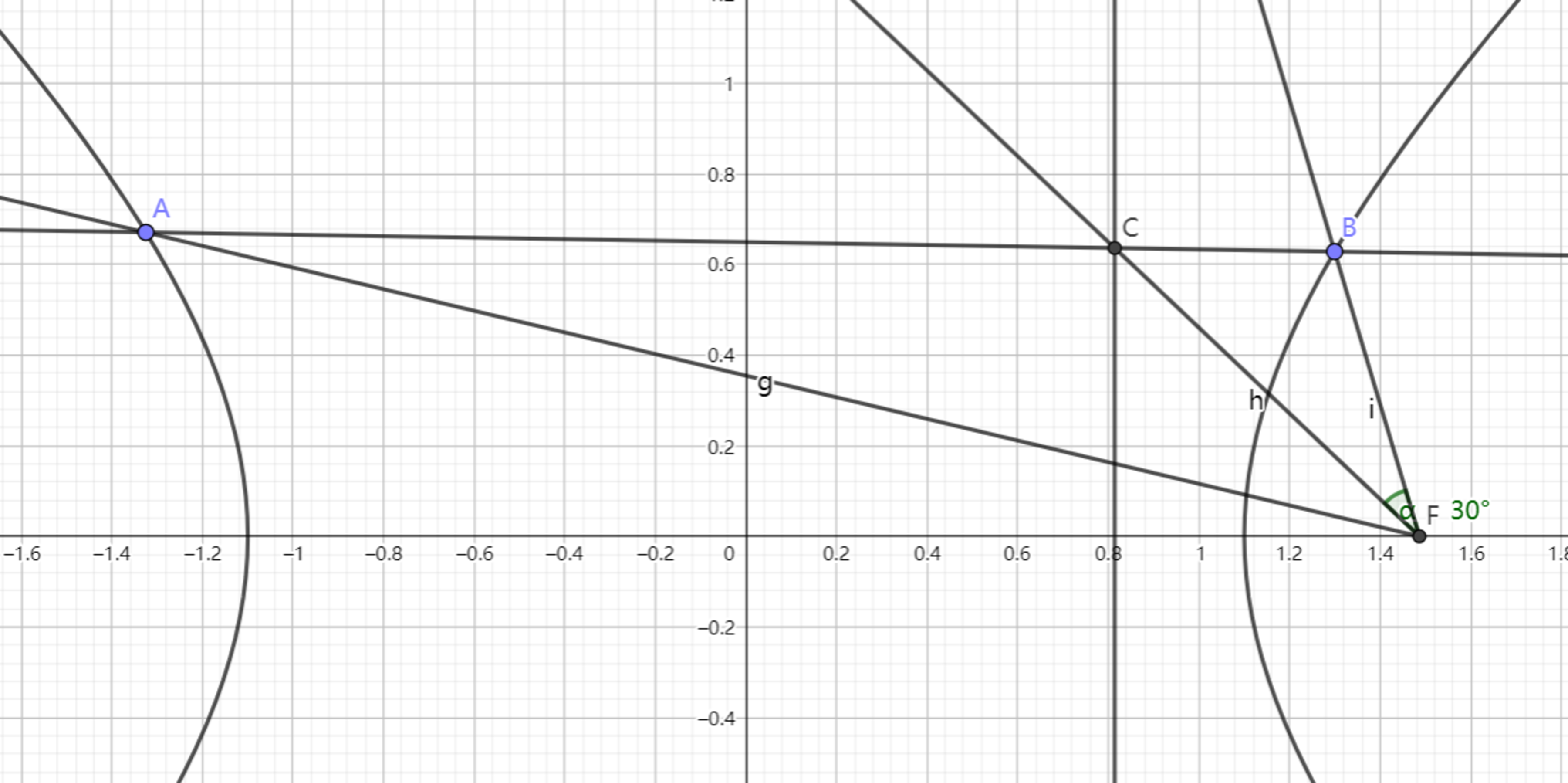Hyperbola and the directix

As shown above, the hyperbola has the equation: , and its focus is . Line intersects with the left part of the hyperbola at point , right part at point .
Line is the directix of the hyperbola. If intersects with the directix with point , given that , what is in degrees?
Bonus: Prove your conjecture.
The answer is 60.
This section requires Javascript.
You are seeing this because something didn't load right. We suggest you, (a) try
refreshing the page, (b) enabling javascript if it is disabled on your browser and,
finally, (c)
loading the
non-javascript version of this page
. We're sorry about the hassle.
Suppose that A , B have coordinates ( − a cosh u , b sinh u ) and ( a cosh v , b sinh v ) respectively, It is a standard calculation that F A = a ( e cosh u + 1 ) F B = a ( e cosh v − 1 ) where e is the eccentricity of the hyperbola. Let C be the point of intersection of the line segment A B with the angle bisector of ∠ A F B . Then we now that C divides the line A B in the ratio A C : C B = A F : F B Thus O C = F A + F B F B O A + F A + F B F A O B and so, in particular, the x -coordinate of C is e ( cosh u + cosh v ) e cosh v − 1 ( − a cosh u ) + e ( cosh u + cosh v ) e cosh u + 1 a cosh v = a e − 1 so that C lies on the directrix of the hyperbola that is closer to F .
Thus, in this case, we must have ∠ A F C = ∠ C F B = 3 0 ∘ , and hence ∠ A F B = 6 0 ∘ .